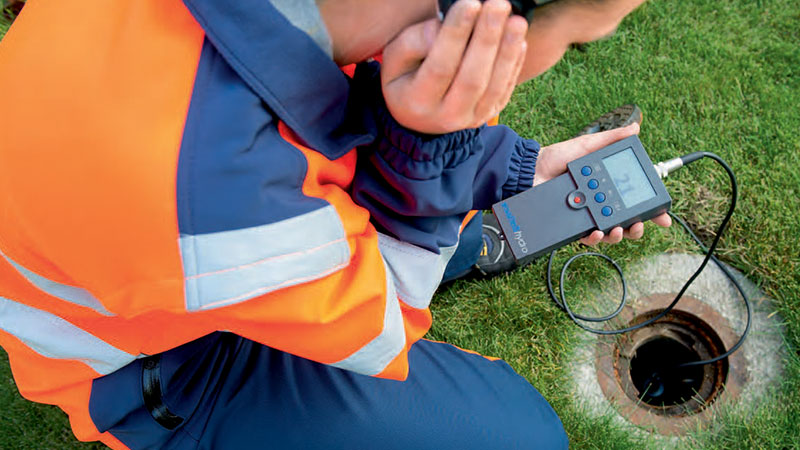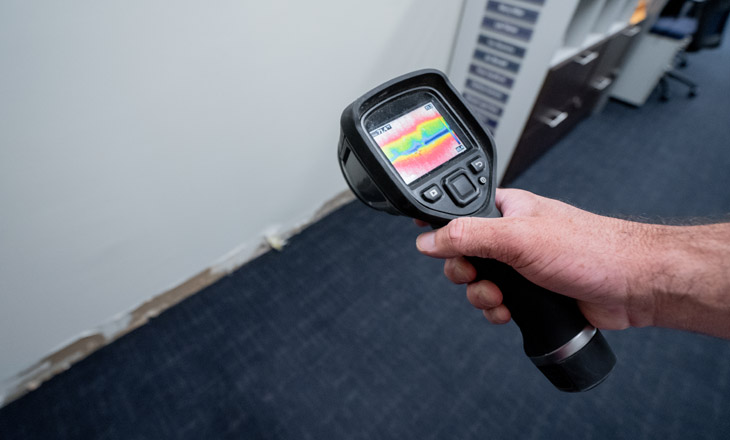Advanced Water Leak Detection Solutions for Your Home and Business
Advanced Water Leak Detection Solutions for Your Home and Business
Blog Article
Innovative Solutions for Very Early Detection of Water Leaks in Buildings and Infrastructure
As the integrity of buildings and framework is vital, the difficulty of very early detection of water leaks has stimulated cutting-edge options that promise to reinvent the way we secure versus prospective problems. From cutting-edge leakage discovery technologies to the release of IoT sensors for real-time tracking, the landscape of leakage avoidance is developing swiftly. Machine discovering formulas offer a look right into the future of leakage prediction, while thermal imaging provides a non-intrusive approach for pinpointing covert leakages. Automated water circulation evaluation systems are reshaping exactly how leakages are recognized and addressed, paving the means for an aggressive approach to water leak discovery. Each of these remedies holds the key to guaranteeing the dependability and durability of our constructed environment, prompting a shift towards a much more lasting and reliable future.
Advanced Leakage Discovery Technologies
Advanced leakage discovery modern technologies, equipped with advanced sensing units and formulas, play an essential role in swiftly recognizing and determining water leakages in different settings. These technologies employ a combination of acoustic, thermal, and electromagnetic sensing methods to spot leaks properly. Acoustic sensing units detect the audio of escaping water, permitting precise localization of the leakage source. Thermal imaging spots temperature changes triggered by water leak, offering another reliable technique for leak recognition. Electro-magnetic sensors can recognize modifications in magnetic fields triggered by water, offering yet one more layer of leak discovery capacity.

IoT Sensors for Real-Time Monitoring
In the world of modern-day water leak detection, the combination of IoT sensors for real-time tracking stands for a crucial improvement in boosting positive leakage discovery capacities. These sensors offer constant tracking of water supply, supplying real-time information on water circulation prices, stress variants, and temperature level modifications. By leveraging IoT innovation, these sensors can identify also the tiniest anomalies in water use patterns, making it possible for early recognition of potential leaks prior to they intensify into significant concerns.
IoT sensing units send information to a central platform, where sophisticated algorithms evaluate the information and generate alerts or notifications when abnormalities are detected. This real-time monitoring capacity permits residential or commercial property owners or center supervisors to immediately attend to leaks, reducing water damage, lowering fixing expenses, and saving water resources.
In addition, IoT sensing units can be integrated with building monitoring systems, enabling for automatic responses to detected leakages, such as shutting down water valves or turning on pumps to alleviate the impact of leakages. Generally, the implementation of IoT sensing units for real-time tracking considerably enhances the performance and efficiency of water leakage detection in buildings and framework.
Artificial Intelligence Algorithms for Leak Prediction

One key benefit of utilizing artificial intelligence for leakage prediction is its ability to continually discover and improve its precision in time. As even more information is collected and fed right into the formula, it can refine its forecasts and adjust to altering problems, ultimately enhancing the reliability of leakage detection systems.
In addition, device learning formulas can help in recognizing subtle indicators of leaks Our site that might go unnoticed by typical monitoring approaches. water leak detection. By evaluating intricate information sets in real-time, these algorithms can provide very early warnings and notifies, permitting prompt intervention and preventive upkeep to reduce potential water damage and connected expenses
Making Use Of Thermal Imaging for Leakage Detection
Thermal imaging technology offers a promising technique for identifying water leaks in numerous systems and infrastructures. By making use of infrared radiation and temperature variations, thermal imaging cameras can determine concealed leaks that are not conveniently visible to the naked eye.
Among the essential benefits of thermal imaging for leakage discovery is its non-intrusive nature. Unlike typical methods that may call for getting into walls or floorings to locate leakages, thermal imaging permits non-destructive testing. This not just saves time and reduces expenses yet likewise decreases disruption to the building or framework being analyzed. Additionally, thermal imaging can promptly scan huge locations, offering a thorough review of potential leakage sources in a prompt fashion. On the whole, using thermal imaging modern technology boosts the performance and precision of water leak discovery, making it a valuable tool for preserving the integrity of buildings and infrastructures.
Automated Water Flow Evaluation Systems
Just how can computerized water flow analysis systems transform the detection and monitoring of leaks in various systems and facilities? Automated water circulation evaluation systems provide a proactive technique to leak detection by continually checking water circulation rates and patterns. By establishing baseline information, these systems can rapidly identify discrepancies that might show a leakage, allowing timely treatment to stop extensive damages.
These systems use innovative formulas to assess real-time data and provide prompt signals when anomalies are identified, enabling quick action to be taken. In addition, computerized water circulation analysis systems can be incorporated with why not check here structure administration systems or IoT platforms, enhancing general efficiency and making it possible for remote monitoring abilities.
Moreover, the information collected by these systems can be utilized for anticipating maintenance objectives, assisting to recognize prospective weak factors in the facilities before leaks occur. In general, the implementation of automatic water flow analysis systems can substantially enhance leak detection and management methods, inevitably causing cost financial savings, decreased water wastage, and raised sustainability in structures and facilities.

Conclusion
To conclude, the combination of innovative leakage detection innovations, IoT sensing units, artificial intelligence formulas, thermal imaging, and automated water circulation evaluation systems uses cutting-edge services for very early discovery of water leaks in structures and infrastructure. These technologies make it possible you could look here for real-time tracking, prediction of leakages, and effective detection techniques to protect against water damage and waste. Carrying out these solutions can help in preserving the stability and sustainability of water supply in numerous setups.
Report this page